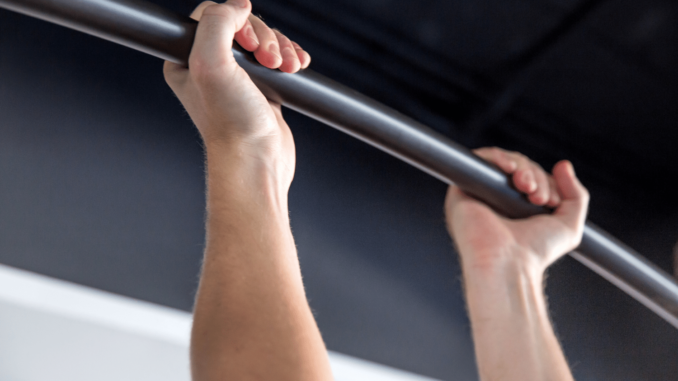
Pull-ups are a favourite exercise for many in the world of fitness. Being able to raise your chin above that bar is no small feat and your ability to perform a good pull-up is a sign that SOMETHING in your exercise regime is on point.
Can’t do pull-ups? Keep reading to pick up ideas on how to achieve the satisfaction of completing that first pull-up.
Pull-ups require upper body strength; specifically ‘pulling’ muscles of the upper body. Primary muscles are those of the upper back and upper arms, but it’s helpful to have a strong low back and abdominals, as well as good grip strength. The best way to strengthen those muscle groups is to include lots of pulling exercises into your training program using machine pull-downs and rows.
Once you have established a base strength with the above method, it’s time to start training the pull-up movement. As noted previously, you need to have solid grip strength in order to perform pull-ups. To quickly and effectively address this, try hanging with straight arms (called a ‘dead hang’) from a pull-up bar for as long as you can.
Here’s a handy guide to assess where you are, and where you should progress to:
<15 seconds: continue working with the pull-downs and rows as primary exercises, and incorporate dead hangs with your toes very lightly touching a bench or a box so that your legs help carry some of your bodyweight. Build to sets that last at least 30 seconds but preferably closer to one minute. Once you’re beyond 30 seconds, move to the next stage à
>15 seconds but < 60 seconds: Work multiple dead hang sets (3-6) and gradually decrease the amount of rest between sets until your can confidently and regularly hang unsupported for 1-2 minutes à
> 60 seconds (or very close) – you’re ready for pull-ups. Let’s go!
Once you’ve demonstrated the ability to support your entire body weight in that dead hang, it’s time to add movement. A preferred method is to begin with slow eccentrics. That is, start at the top of the pull-up position by using a bench or a box to stand on, and slowly and under FULL control lower yourself to the dead hang position. Your goal is to take a full 30 seconds to get from the top (chin over the bar) to the bottom (straight arm). The movement should be continuous and controlled the whole way, i.e. don’t hold the top position for 28 seconds and drop.
If you can do what is described above, you are almost guaranteed to be strong enough to perform one complete pull-up. From there, simply start the process again, but this time start from a dead hang rather than standing on a bench. Pull your chin above the bar to the start position before slowly lowering down. Next step; pull-up and lower slowly, three pull-ups…so on and so forth. Once you can perform 5-6 full pull-ups, you’re ready for a more specialized program… but we’ll leave that for another article!
Tips:
- Make sure you keep your abs tight when you’re hanging.
- Tight abs = more stability = less wasted energy
- If you’re struggling to progress, check that your body weight is where it should be at.
- Heavy body weight = difficulty performing this exercise
Pull-ups are a great exercise to include in a training plan. Give these suggestions a try and see if it takes you closer to achieving YOUR first pull-up!
Article: James Orsatti, Fitness and Sports Instructor, PSP CFB Kingston
Editor(s): Tyson Staples, Fitness Coord, and Cheryl McKinnon, CFB Kingston
